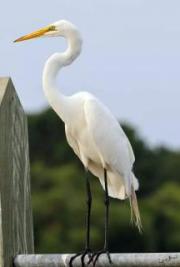{1} Davidson, Osha Gray. Broken Heartland: The Rise of America’s Rural Ghetto. 1996. University of Iowa Press, Iowa City, page 54
{2} “Cities of the United States.” City-data.com. Advameg, Inc <
www.city-data.com>, accessed on April, 20 2009
{3} The map on the top is a state wide map generated from ESRI data. Dark blue represents negative population growth, light blue shows population growth of up to 150,000, light tan shows 150,000-300,000, dark tan 300,000 to 400,000, and red shows over 400,000. The map on the bottom shows population growth per county of Colorado, dark blue representing negative growth, light blue up to 1,000, light tan up to 10,000, dark tan up to 40,000, and red over 40,000.
{4} Data taken from the U.S. Census Bureau, “1990 Census of Population and Housing, Summary Tape File 3; Matrices P13, P31; generated using American FactFinder; <http://factfinder.census.gov>, accessed April 20, 2009
and from http://www.city-data.com/zips/81040.html
{5} Richard E Wood, Survival of Rural America: Small Victories and Bitter Harvests. 2008. University Press of Kansas, page 3
{6} Henry A Wallace Center for Agricultural & Environmental Policy. Making Changes: Turning Local Visions Into National Solutions. May 2001. Arlington, Virginia, page 43
{7} Michael Pollan, The Food Issue: Farmer in Chief. NY Times Magazine, October 9, 2008, page 6: available at www.nytimes.com/2008/10/12/magazine/12policy-t.html, accessed on April 22, 2009.
{8} Richard E Wood, page 3
{9} Ibid., page 4
{10} Data taken from (http://factfinder.census.gov/) and from
http://www.city-data.com/zips/81040.html
{11} Richard E Wood, page 157
{12} All information in this paragraph and the graph below was taken from http://www.city-data.com/zips/81040.html & http://factfinder.census.gov
{13} Nina Glasgow, et. al. Critical Issues in Rural Health. 2004. Blackwell Publishing, USA, page 16
{14} Nina Glasgow, et. al., page 61
{15} Osha Gray Davidson. Broken Heartland: The Rise of America’s Rural Ghetto. 1996. University of Iowa Press, Iowa City, page 43
{16} Bill Mckibben. Deep Economy: The Wealth of Communities and the Durable Future. 2007. Times Books, NY, page 57
{17} “The commonalities of most definitions of social capital are that they focus on social relations that have productive benefits.” http://www.socialcapitalresearch.com/definition.html
{18} Data for the graphs and chart taken from: http://www.city-data.com/zips/81040.html & http://factfinder.census.gov
{19} Wendell Berry. Citizenship Papers. 2003. Shoemaker & Hoard. Washington, D.C. page, 77
{20} Osha Gray Davidson, page 54. Author gives more information on the decline of goods and services
{21} http://www.city-data.com/zips/81040.html
{22} Colorado is number 10 for livestock production in the US: US Department Agriculture, “National Agricultural Statistics Service
1997 Census of Agriculture: Selected Livestock by State: 1997 and 1992.”
Last modified: 11/17/08, <http://www.nass.usda.gov/research/livestock-inv-st.html\>, accessed on April 18, 2009
{23} Information for this graph was taken from the USDA GIS data base, ftp://soildatamart-export.sc.egov.usda.gov/export/e_924883/soil_co627.zip, the graph was made by creating a buffer around the data, so the precision of the data was altered slightly
{24} Bill Mckibben, Deep Economy, pages 96-101. The author describes how our civilization has become “hyper” individualistic.
{25} Wendell Berry. Home Economics. 1987. North Point Press, page 186: “The way that a national economy preys on its internal colonies is by the destruction of community- that is, by the destruction of the principle of local self-sufficiency not only in the local economy but also in the local culture.” “…all involving change from goods once cheap or free to expensive goods having to be bought.”
{26} George Ritzer, McDonaldization: The Reader (2nd ed.) (Thousand Oaks, CA: Pine Forge Press, 2006), page 18
{27} Richard Manning. “The Oil We Eat: Following the Food Chain Back to Iraq,” Harper's Magazine. 2004. Available at: www.harpers.org/TheOilWeEat.html
{28} Bill Mckibben. Deep Economy, page 54
{29} Wendell Berry, Home Economics, page 133
{30} Numbers taken from the USDA: “Farms, Land In Farms, and Livestock Operations” 2000 and 2009 summaries. www.usda.org, accessed on April 24, 2009
{31} Bill Mckibben, Deep Economy. Page 54
{32} Osha Gray Davidson, pages 15-23
{33} Richard E Wood, page 157
{34} Bill Mckibben. Deep Economy, page 57
{35} Ibid., page 55
{36} Henry A Wallace Center for Agricultural & Environmental Policy, page 1 & 9. “…government payments that are based upon volume of output are clearly more important to large, specialized farms than to small diversified farms. Research and cooperative extension programs are geared to increasing output per acre or animal unit…”
{37} Ibid., page 32
{38} Ibid., page 2 describes how market access is restricted for many producers and how antitrust laws for this sector are not being enforced leading to increased consolidation of all aspects of agriculture. “Today, four firms handle nearly 80 percent of all steer and heifer slaughter; just two decades ago, the level of concentration was less than half as high.” (page 10)
{39} Bill Mckibben. Deep Economy, page 67; Henry A Wallace Center for Agricultural & Environmental Policy, page 10
{40} Osha Gray Davidson, pages 15-23
{41} Ibid., pages 15-23. The author provides the full story of this era, coupled with case studies of actual people who lost their land during this time.
{42} Michael Pollan, The Food Issue: Farmer in Chief, page 1. “Four of the top killers in America today are chronic diseased linked to diet: heart disease, stroke, Type 2 diabetes and cancer.”
{43} Lester R. Brown, Outgrowing the Earth: The Food Security Challenge in an Age of Falling Water Tables and Rising Temperatures (W.W. Norton and Company, 2005). Full book available on-line at: www.earth-policy.org/Books/Out/Contents.htm, chapters 1 & 10
{44} Jules Pretty, Landscapes Lost and Found, chapter from The Earthscan Reader in Sustainable Agriculture. 2005. Earthscan, UK & VA, page 226: “The consequences of food systems producing anonymous and homogenous food are obesity and diet-related diseases for about a tenth of the world’s people, and persistent poverty and hunger for another seventh.”
{45} Michael Pollan, Farmer in Chief: “But this kind of farming [polyculture] is complicated and needs many more hands on the land to make it work. Farming without fossil fuels- performing complex rotations of plants and animals and managing pests without petrochemicals- is labor intensive and takes more skill than merely “driving and spraying,” which is how corn-belt farmers describe what they do for a living.” Page 5
{46} Bill Mckibben. Deep Economy, page 62
{47} Bill Mckibben. Deep Economy, page 62
{48} Richard Manning
{49} Michael Pollan. The Food Issue: Farmer in Chief, page 1
{50} Bill Mckibben, The End of Nature. 2006. Random House, Inc., New York, page 17-25
{51} Richard Manning
{52} “DDT Compound Speeds Breast Cancer Growth.” The Washington Post. February 14, 2008. Can be accessed at: http://www.washingtonpost.com/wp-dyn/content/article/2008/02/14/AR2008021401780.html
{53} Montgomery, David R. Soil Erosion and Agricultural Sustainability. 2007. National Academy of Sciences of the United States of America. Article available at: http://www.pnas.org/content/104/33/13268.full
Also for a description of sustainable techniques that enhance the soil see Michael Pollan. The Omnivore’s Dilemma: A Natural History of Four Meals. 2007. Penguin Books. U.S, section 2
{54} Peter Singer & Jim Mason. The Ethics of What We Eat: Why Our Food Choices Matter. 2006. Holtzbrinck Publishers, United States, page 43
{55} Ibid.
{56} Michael Pollan, The Omnivore’s Dilemma, page 63
{57} Michael Pollan, The Omnivore’s Dilemma, page 64
{58} Wendell Berry, Citizenship Papers, page 19. “Or we can promote a decentralized world economy that would have the aim of assuring to every nation and region a local self-sufficiency in life-supporting goods. This would not eliminate international trade, but it would tend toward a trade in surpluses after local needs have been met.”
{59} Ibid., page 57
{60} Ibid., page 130
{61} Wendell Berry, Home Economics, page 125. “At every level of the agricultural system, the subsistence principle should operate.”
{62} Wendell Berry, Citizenship Paper, page 75
{63} Wendell Berry, Home Economics, page 125
{64} Wendell Berry, Citizenship Paper, page 22. Also see Wes Jackson, Becoming Native to this Place. 1994. University Press of Kentucky. Pages 36-38
{65} Wendell Berry, et.al. Meeting the Expectations of the Land. 1984. North Point Press, page 10
{66} Wendell Berry, Another Turn of the Crank. 1996. Counterpoint, United States, page 19. “The old and young should take care of each other, and the young should learn from the old.”
{67} Ibid., page 19. “Always ask of any proposed change or innovation: What will this do to our community? How will this affect our common wealth?”
{68} Michael Pollan, An Omnivore’s Dilemma, page 259
{69} Based on conversations with people from other cultures.
{70} Jules Pretty, “Social Capital and Collective Management of Resources,” chapter from The Earthscan Reader in Sustainable Agriculture. 2005. Earthscan, UK & VA, page 174
{71} Jules Pretty, “Social Capital and Collective Management of Resources,” page 175, Also see Bill Mckibben, Deep Economy, page 110
{72} Bill Mckibben, Deep Economy, 111
{73} Ibid
{74} Cornelia Butler Flora & Jan L. Flora, “Creating Social Capital”, chapter from The Earthscan Reader in Sustainable Agriculture. 2005. Earthscan, UK & VA, page 41
{75} Bill Mckibben, Deep Economy, page 110
{76} Cornelia Butler Flora & Jan L. Flora, “Creating Social Capital, page 46
{77} Michael Pollan, Farmer in Chief, page 4
{78} Albert Howard, “The Post-War Task,” chapter from The Earthscan Reader in Sustainable Agriculture. 2005. Earthscan, UK & VA, page 8
{79} Bill Mckibben, Deep Economy, Michael Pollan, An Omnivore’s Dilemma
{80} M. Jahi Chappell, “Shattering Myths: Can Sustainable Agriculture Feed the World?” Available at www.foodfirst.org/node/1778
{81} Wes Jackson, “Becoming Native to this Place,” chapter from The Earthscan Reader in Sustainable Agriculture. 2005. Earthscan, UK & VA, page 35
Also, Henry A Wallace Center for Agricultural & Environmental Policy
{82} Henry A Wallace Center for Agricultural & Environmental Policy, page 2
{83} Henry A Wallace Center for Agricultural & Environmental Policy, page 25
{84} For more information on Cuba’s agricultural system see: Bill McKibben, “The Cuba Diet,” (2005) Harper’s Magazine, April 2005, pp. 61-69. Available online at http://www.harpers.org/archive/2005/04/0080501
{85} Wendell Berry, Citizenship Papers, page 64
{86} For more information on US regulation and its effects on local food production please see Michael Pollan, The Omnivore’s Dilemma: A Natural History of Four Meals (Penguin: 2007.)
{87} For more information on different types of pest controls see: Meyer, John R. “Chapter 19: Pest Control Tactics.” Department of Entomology. 2003. NC State University. www.cals.ncsu.edu/.../text19/integrate.html, accessed on April 29, 2009
{88} Picture of grafting technique: FAO Corporate Document Repository, “Meeting on Forest Genetics.” www.fao.org/docrep/03650e/03650e0e.htm, accessed on April 10, 2009; Picture of NEEM Spray: The NEEM People. Perpetua. 2006. <www.theneempeople.com>, website accessed on April 10, 2009







